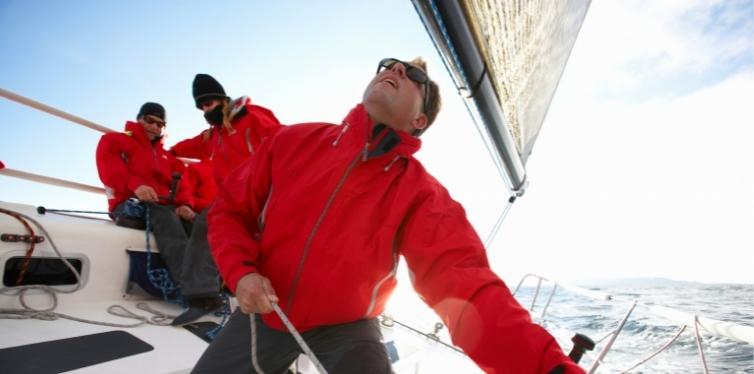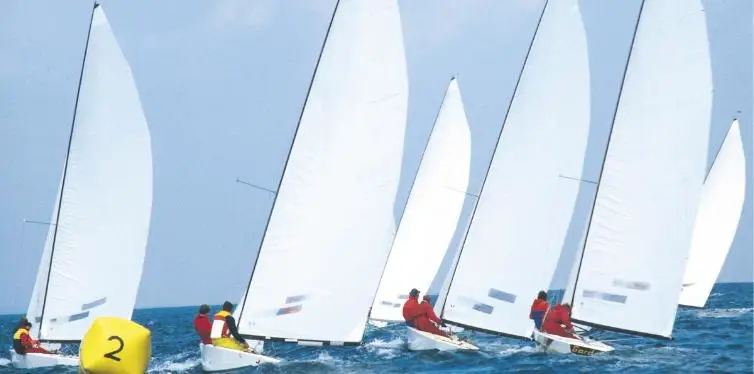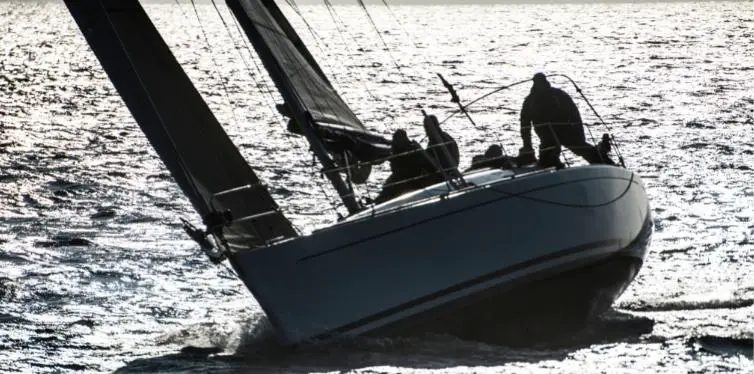Sailing races are some of the most unique sporting events on the water. But how do sailing races work, such as a regatta?
After reading, you’ll be able to understand how a regatta race works along with the racing rules. In addition, you’ll see how a sailing smartwatch is necessary to be successful in those races.
Regattas are a long-term race, meaning your team has to compete well consistently each time in order to be successful in match racing, team racing, or even fleet racing.
The cool thing about these races is that you don’t have to win every single one to be the winner of a regatta.
How Do Sailing Races Work: A Quick Introduction

Regattas are a series of races that are compiled into one event, which is sometimes referred to as buoy racing.
Each race has its own basic racing rules and features that set it apart from another race in the series. Depending on the type of races that are being held will determine how long the regatta is going to last.
The key to being successful in regattas is to be as consistent as possible with every race that you or your team participates in, having the best sailing skills, knowing basic rules, or simply having the best windward boat on a windy day.
Having the best leeward boat, or sailing downwind, is critical while finishing the race. Winning obviously goes a long way in that success, but coming in second or third isn’t too bad either, just as long as you’re not the last boat.
Each yacht race or other boats that are used is scored based on the ending result of when you or your team has crossed the finish line. You’ll be awarded a set amount of points based on the ending position and the type of race.
You’ll be provided with sailing instructions before entering a race, typically showing the racing area and giving you an idea of how to sail the first leg.
However, these sailing instructions aren’t going to give you any useful tips to win. Just don’t be the boat that crosses the start line too soon.
How a Sailing Race Starts and the Starting Line

Sailing races have a countdown or starting signal before the race begins to allow racers the opportunity to get their boats in place.
You’ll likely hear a loud horn or alarm that will alert you of the start of the countdown, which is usually 10 or 15 minutes.
This is where a sailing smartwatch is crucial, as you’ll need to precisely cross the starting line at the right time or risk being penalized for going too early.
Going too early means you’ll have to turn around behind all other racers and lose distance, while going too late means you simply missed the opportunity to earn valuable seconds to your time.
The racing courses have imaginary lines or an “invisible” starting line, meaning there is no line at all. The distance between an anchored boat of the race committee officials and a buoy is the starting line.
Racers have to perfectly time their opportunity of when to cross the starting line, which means doing whatever is necessary behind the line to prepare for the race.
Going in circles or being far enough away is necessary to avoid going over the line. Having a sailing watch that’s specifically used for races can make a huge difference.
How Are Sailing Races Scored?

Depending on what race is being held will determine the scoring system. For example, fleet racing has an ending position that will determine the score.
So first place earns one point, while second earns two points and so on. The goal is to earn as few points as possible. Fleet racing might consist of many boats, like 20, so it is important to finish as early as possible to obtain the lowest score.
Team racing is an exhilarating aspect of regatta races that most sailors prefer that is usually broken up into two divisions.
In team racing, the same scoring method applies with your position on how you end the race. However, sailors in your team are responsible for holding their own weight on the score, so other boats are responsible for the score.
If you cross the finish line second, you earn two points. If your teammate crosses the finish line third, they have three points.
Together, your team of sailors so far has a total of five points, but there are usually three boats in a team and not two boats.
Match racing on the other hand is quite different, as it uses a round robin format. In a round robin format, it goes simply by winners and losers of races or whoever the best boat is.
No points are awarded, so the winners will advance while the ones who lost the race will face other racers who lost to determine their finishing place.
How Long Can Sailboat Racing Last?

Each sailboat race can last anywhere between five and 30 minutes depending on a variety of factors.
They usually take longer if there are a ton of boats competing, the conditions are not as favorable with light air, or if any issues happen along the way with one boat or another. Of course, it also depends on the type of sailing race you’re in.
Regattas in general could last several days over the course of a weekend to allow all racers to compete.
Depending on how complex the regatta is, such as three different races being used, will determine how long it needs to be held.
In some situations, regattas can last up to a week. These are typically for races that are ocean crossing events, but racers that are competing know what they are getting into and have the right boat.
Some tips to help make distance racing go faster with your boat for sailors include aiming for the finishing line, sailing hard, watching out for the weather, and proper practice.
All play a vital part in being successful at a regatta and helping the event move a little faster.
- Sailing toward the finish line means you might need to ignore the original rhumb line. You don’t want to overthink any strategy, so just aim the best you can toward the finish line.
- Pushing your boat to its limits is key to winning regattas. Sailing 10 degrees off course will help with sailing distance races.
- The weather is your ticket to a fast race if you can adjust to the conditions with a windward mark. Check multiple sources of weather information and other data before racing so that you can take advantage of the situation with a proper starboard tack or a port tack. A high-quality sailing watch can help provide some of that vital information at a moment’s notice. In some situations, the same tack will be used multiple times on your boat and potentially best used when sailing upwind.
- While you can’t practice while you’re at the race, you’ll need to prepare well in advance if you want to do well and make your boat go full speed. Practice makes perfect, so don’t forget to put in the time to practice wind shifts, running a straight line, and other factors that come into play.
Final Thoughts
Regattas are exciting racing events for those that want to push the limits of their sailboat. Each race can have a different outcome, so you never truly know who is going to win.
You don’t have to be perfect at using a starboard tack boat or a port tack boat to enjoy yacht racing or any regattas.
The starting line can be tricky and will take practice to cross it perfectly at the right time. Just don’t be the one who forgets their sailing smartwatch, or you might be the racer who gets penalized first for crossing that line too early.


